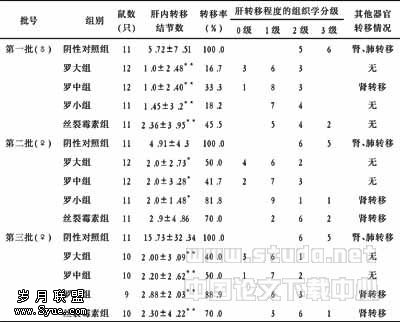实时定量PCR检测隐球菌性脑膜炎中TRAIL表达
作者:周晔,邓安梅,陈燕,谷明莉,吴传勇,陈波,陈孙孝,仲人前
【摘要】 目的 研究建立实时荧光定量(RFQ)-PCR法测定TRAIL mRNA含量的方法,探讨其在隐球菌性脑膜炎患者外周血单个核细胞中表达的检测价值,并分析隐球菌性脑膜炎患者免疫指标与TRAIL的相关性。方法 设计特异性的引物和探针,以人基因GAPDH为内参照,用实时定量PCR的方法检测35例健康人和35例隐球菌性脑膜炎患者外周血单个核细胞中TRAIL mRNA的表达水平,采用特定蛋白分析仪测定IgG、IgA、IgM、C3、C4。结果 与健康人比较,隐球菌性脑膜炎患者外周血单个核细胞中TRAIL mRNA的表达明显下降(P<0.01)。隐脑患者血清中的 C3和IgG显著下降(P<0.01),且与TRAIL 的变化成正相关。结论 隐球菌性脑膜炎患者TRAIL下降,提示TRAIL可能参与隐球菌性脑膜炎的疾病进程,这为有效隐球菌性脑膜炎提供了新的线索。
【关键词】 隐球菌性脑膜炎;TRAIL;PCR;实时定量
Abstract: Objective To investigate the method of determining the content of TRAIL mRNA by real-time fluorescent quantitation (RFQ)-PCR, to explore the detection value of expression in peripheral blood mononuclear cells (PBMC) of patients with cryptococcal meningitis, and to analyze the correlation between immune indices of cryptococcal meningitis and TRAIL.Methods By designing specific primers and probes, and with human gene GAPDH as an internal reference, RFQ-PCR was employed to determine the levels of expression of TRAIL mRNA in PBMC from 35 healthy people and 35 patients with cryptococcal meningitis, and a single immunoquantitative diffusion method was adopted to determine the levels of IgG, IgA, IgM, C3, and C4. Results Compared with that of healthy people, the expression of TRAIL mRNA in PBMC of the patients with cryptococcal meningitis was significantly decreased (P<0.01). The serum levels of C3 and IgG in the patients with cryptococcal meningitis were significantly decreased (P<0.01), and were correlated positively with the change of TRAIL. Conclusion The significantly decreased expression of TRAIL mRNA indicates that TRAIL may be involved in the pathologic development of cryptococcal meningitis, thus providing a new approach for the effective treatment of cryptococcal meningitis.
Key words: cryptococcal meningitis; TRAIL; polymerase chain reaction; real-time fluorescent quantitation
隐球菌性脑膜炎是新生隐球菌或其变种侵犯中枢神经系统引起的一种深部真菌感染,临床主要表现为亚急性或慢性脑膜炎、脑膜脑炎,少数可表现为颅内占位性病变[1~3]。免疫功能低下的成人,大剂量糖皮质激素及抗肿瘤化疗药物的使用、肿瘤、AIDS、移植后抗排斥药物的使用等因素,导致隐球菌病的发病率越来越高[4~10]。近年来,人们对此病开展了多方面研究,取得了很大的进展。
TRAIL即肿瘤坏死因子相关的凋亡诱导配体,属于肿瘤坏死因子超家族,1995和1996年分别由Wiley[11] 和Pitti等[12]分离并鉴定。人类TRAIL基因定位于染色体3q26,编码281个氨基酸,分子量为32 500。有研究表明TRAIL有免疫抑制和调节功能[13~16],其介导的凋亡信号与自身免疫性疾病的发生、有关,而在隐球菌性脑膜炎中的作用尚未见报道。本研究采用实时荧光定量PCR检测隐球菌性脑膜炎外周血单个核细胞TRAIL mRNA表达的方法,探讨其参与发病的机制。
1 材料和方法
1.1 研究对象 本院住院确诊的隐球菌性脑膜炎患者35例,男13例,女22例,平均年龄38(31~62)岁,所有病例均为脑脊液找到和(或)脑脊液培养出新型隐球菌。正常对照组35例,男15例,女20例,平均年龄35(25~50)岁。
1.2 试剂和仪器 淋巴细胞分离液(上海华精试剂公司), DU640型紫外分光光度仪(美国Beckman公司),Trizol试剂,逆转录反应体系(Invitrogen公司),ABI prism 7500型荧光定量PCR仪(美国ABI生物公司),DADE BEHRING BN2特定蛋白分析仪(德国DADE BEHRING公司)。
1.3 TRAIL引物和探针的设计合成 参照GENEbank中TRAIL基因序列设计合成引物和探针,以人基因GAPDH为内参照,委托美国ABI生物公司合成。序列及扩增长度见表1。表1 TRAIL和GAPDH的引物和探针序列
1.4 PBMC的分离及总RNA的提取 无菌抽取静脉血3ml注入枸橼酸钠抗凝管,加等量生理盐水稀释1倍后加于淋巴细胞分离液上,以2 000 r/min 的速度水平离心20 min 后收集白细胞层细胞,用PBS洗涤两次后加入Trizol,提取细胞总RNA,操作按说明书进行,-70 ℃ 保存备用。
1.5 反转录反应 取总RNA 2 μg 进行反转录反应,体系含1×RT Buffer,0.5 mmol/L dNTPs,1 μmol/L Oligo-dT引物,RNase 抑制剂10 U,SuperseiptatTMⅡ反转录酶4 U,反应条件为:25 ℃ 10 min;42 ℃ 50 min;85 ℃ 5 min;冰浴5 min 后加入1 μl E.coli RNase H,37 ℃ 20 min。cDNA置-20 ℃ 保存。
1.6 PCR反应 20 μl 反应体系中含有模板Cdna 1 μl,PCR Master mi×10 μl,20 × mix 1 μl,RNAase-free水8 μl,循环参数为:50 ℃ 2 min;95 ℃ 10 min;95 ℃ 15 s,60 ℃ 1 min,40个循环;同时设RT质控和PCR扩增两个空白对照。根据TRAIL与内参基因GAPDH 的Ct差值,求出两组标本TRAIL的相对表达量。
1.7 IgG、IgA、IgM、C3、C4检测 采用DADE BEHRING BN2全自动特定蛋白分析仪检测。
1.8 数据处理及统计分析 靶基因的相对定量按公式得出:靶基因=2-(△△Ct)。其中ΔΔCt=ΔCt,Q-ΔCt,C。ΔCt,Q为疾病组靶基因的Ct值与管家基因Ct值之差;ΔCt,C为对照组靶基因的Ct值与管家基因Ct值之差。测定ΔCt值以x±s表示,组间差异采用成组t检验,以SPSS软件进行统计分析。
2 结果
2.1 TRAIL在隐球菌性脑膜炎患者及正常对照组的表达水平比较 TRAIL基因在隐球菌性脑膜炎患者组的原始模板浓度仅为正常对照组的0.21倍,差异有显著统计学意义(P<0.01),详见表2。表2 两组TRAIL表达水平比较
2.2 隐球菌性脑膜炎患者与健康人的免疫指标相比较 血清中的C3和IgG显著下降(P<0.01),IgA、IgM、C4的变化无统计学意义(P>0.05),详见表3。表3 两组免疫指标比较
2.3 隐球菌性脑膜炎患者血清中的C3和IgG与TRAIL的相关关系 C3和IgG下降与TRAIL的变化成显著的正相关[IgG(r=0.691,P<0.001)、C3(r=0.664,P<0.001)],详见图1,2。
图1 隐脑患者IgG与TRAIL相关关系图 图2 隐脑患者C3与TRAIL相关关系图
3 讨论
TRAIL是近年来发现的TNF家族的又一成员,TNF家族至少有16个成员,包括 TNF-α,TNF-β,FasL,CD27,CD30,CD40,4-l BB,OX-40,TRAMP,CAP-1,TRAIL,G1TR,HVEM,osteoprotegerin及NGF。它们在结构上有共同点,即同属Ⅱ型跨膜蛋白,具有膜结合型与可溶型两种形式,其C末端的胞外区能形成可溶性的三聚体或二聚体,常以同源三聚体形式存在。TNF受体家族成员都是I型跨膜糖蛋白,膜外富含半胱氨酸的结构域(CRD)。
TRAIL主要功能是诱导凋亡,活化转录因于NF-кB。TRAIL通过两条不同的信号通路调控凋亡,其一,是通过半胱氨酸蛋白酶(caspase)通路传导的凋亡信号;其二,是通过活化NF-кB调控凋亡。有研究报道CD4+T细胞、NK细胞、巨噬细胞和树突状细胞等多种免疫细胞的毒性作用至少部分依赖TRAIL表达。此外,TRAIL还能诱导自身反应性T细胞和炎性细胞凋亡,与多发性硬化[17],系统性红斑狼疮[18]等自身免疫性疾病发病机制有关。
由于隐球菌是条件致病菌,随着抗生素、免疫抑制剂等的广泛应用,器官移植、骨髓移植等新技术的开展,以及艾滋病(AIDS)等各种慢性消耗性疾病发病率的升高,近年来隐球菌性脑膜炎的发病率也呈明显上升趋势,在国外突出表现在AIDS人群中。据统计,美国约有6%~8%的AIDS患者发生隐球菌性脑膜炎,而我国以散发非AIDS人群为主,但也有AIDS并发隐球菌性脑膜炎的报告。
本研究应用FQ-PCR法检测了35名隐球菌性脑膜炎患者,结果显示TRAIL基因mRNA的表达明显下降。患者血清免疫指标中只有C3和IgG显著下降,而且与TRAIL的变化成正相关。我们分析可能是由于TRAIL mRNA的表达异常,导致机体免疫系统凋亡紊乱,在机体免疫力下降时,导致感染隐球菌病。隐球菌性脑膜炎病情可能与TRAIL基因的表达水平异常有关,但由于TRAIL信号转导机制尚不太明确,其在疾病中的作用有待进一步探讨。
【】
[ 1] Speed B, Dunt D. Clinical and host differences between infections with the two varieties of Cryptococcus neoformans[J].Clin Infect Dis,1995,21(1):28-34.
[ 2] White MH, Armstrong D. Cryptococcosis[J]. Infect Dis Clin North Am, 1994, 8(2):383-398.
[ 3] Maher D,Mwandumba H.Cryptococcal meningitis in Lilongwe and Blantyre, Malawi[J].J Infect,1994,28(1):59-64.
[ 4] Eyer-Silva WA, Basilio-de-Oliveira CA, Morgado MG. HIV infection and AIDS in a small municipality in Southeast Brazil[J].Rev Saude Publica,2005,39(6):950-955.
[ 5] Kapoor A,Flechner SM,O’Malley K,et al.Cryptococcal meningitis in renal transplant patients associated with environmental exposure[J].Transpl Infect Dis,1999,1(3):213-217.
[ 6] Wang W,Carm AR.A clinical manifestation of AIDS with cryptococcal meningitis in Equatorial Guinea[J].Trop Doct,2001,31(4):221-222.
[ 7] Khan ZK, Katiyar R, Shukla R,et al.Cryptococcosis associated with HIV negative Indian patients and HIV positive Indian blood donors[J].Zentralbl Bakteriol,1996,283(3):360-374.
[ 8] Chuck SL,Sande MA.Infections with Cryptococcus neoformans in the acquired immunodeficiency syndrome[J].N Engl J Med,1989,321(12):794-799.
[ 9] Silveira FP, Husain S,Kwak EJ,et al.Cryptococcosis in liver and kidney transplant recipients receiving anti-thymocyte globulin or alemtuzumab[J].Transpl Infect Dis,2007,9(1):22-27.
[10] Lakshmi V,Sudha T,Teja VD,et al.Prevalence of central nervous system cryptococcosis in human immunodeficiency virus reactive hospitalized patients[J].Indian J Med Microbiol,2007,25(2):146-149.
[11] Wiley SR,Schooley K,Smolak PJ,et al.Identification and characterization of a new member of the TNF family that induces apoptosis[J].Immunity,1995,3(6);673-682.
[12] Pitti RM,Marsters SA,Ruppert S,et al.Induction of apoptosis by Apo-2 ligand,a new member of the tumor necrosis factor cytokine family[J].J Biol Chem,1996,271(22):12687-12690.
[13] Mackay F,Kalled S.TNF ligands and receptors in autoimmunity:an update[J].Curr Opin Immunol,2002,14;783-790.
[14] Badovinac VP, Messingham KA,Griffith TS,et al.TRAIL deficiency delays,but does not prevent,erosion in the quality of “helpless”memory CD8 T cells[J].J Immunol,2006,177(2):999-1006.
[15] Ren X,Ye F,Jiang Z,et al.Involvement of cellular death in TRAIL/DR5-dependent suppression induced by CD4(+)CD25(+)regulatory T cells[J].Cell Death Differ, 2007,14(12):2076-2084.
[16] Apolloni E, Bronte V,Mazzoni A,et al.Immortalized myeloid suppressor cells trigger apoptosis in antigen-activated T lymphocytes[J].J Immunol,2000,165(12):6723-6730.
[17] Mehmut M,Takeda K,Abe M,et al. Fas ligand and TNF-related apoptosis-inducing ligand induction on infiltrating lymphocytes in bladder carcinoma by bacillus Calmette-Guérin treatment[J].Uril Unt,2005,75(1):80-87.
[18] Seiji KA,Ryuji MB,Toshiyuki FB. TNF-related apoptosis inducing ligand (TRAIL) gene polymorphism in Japanese patients with multiple sclerosis[J].J Neuroimmunology,2005,167:170-174.











